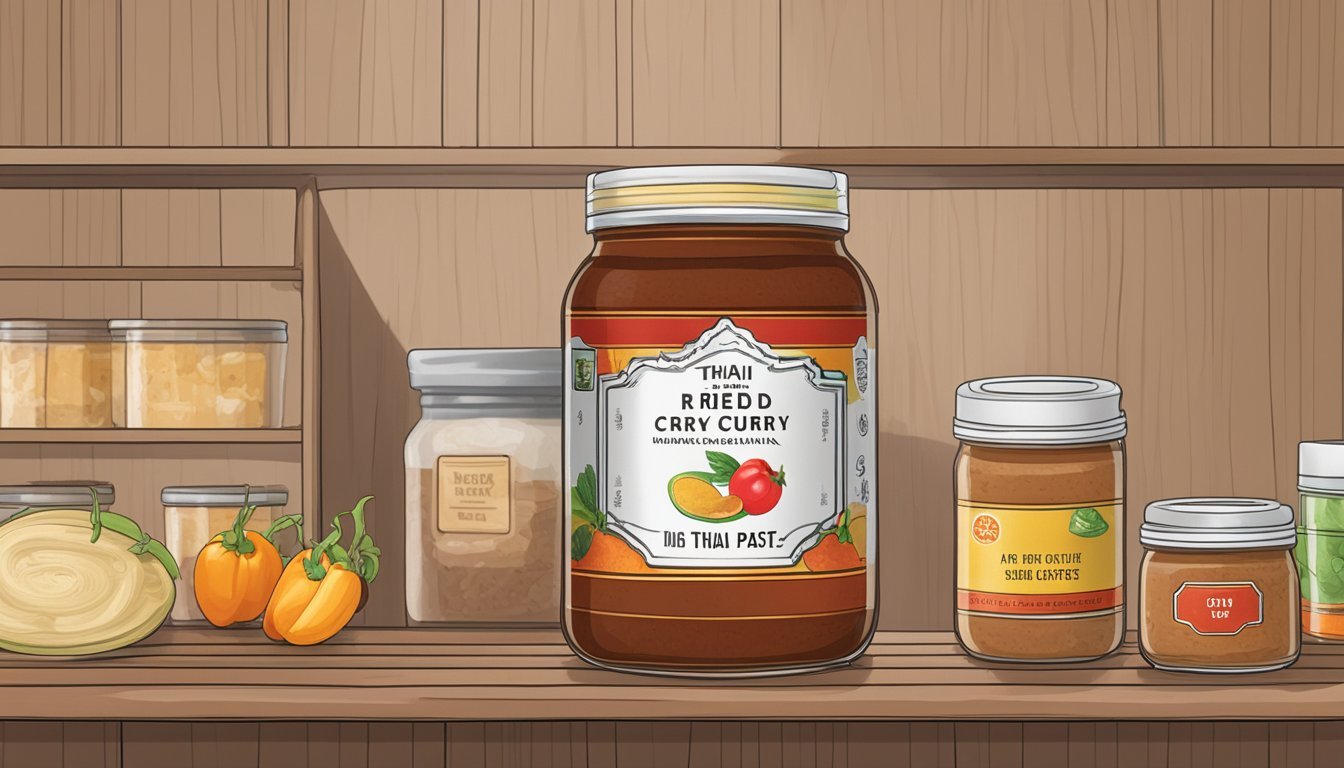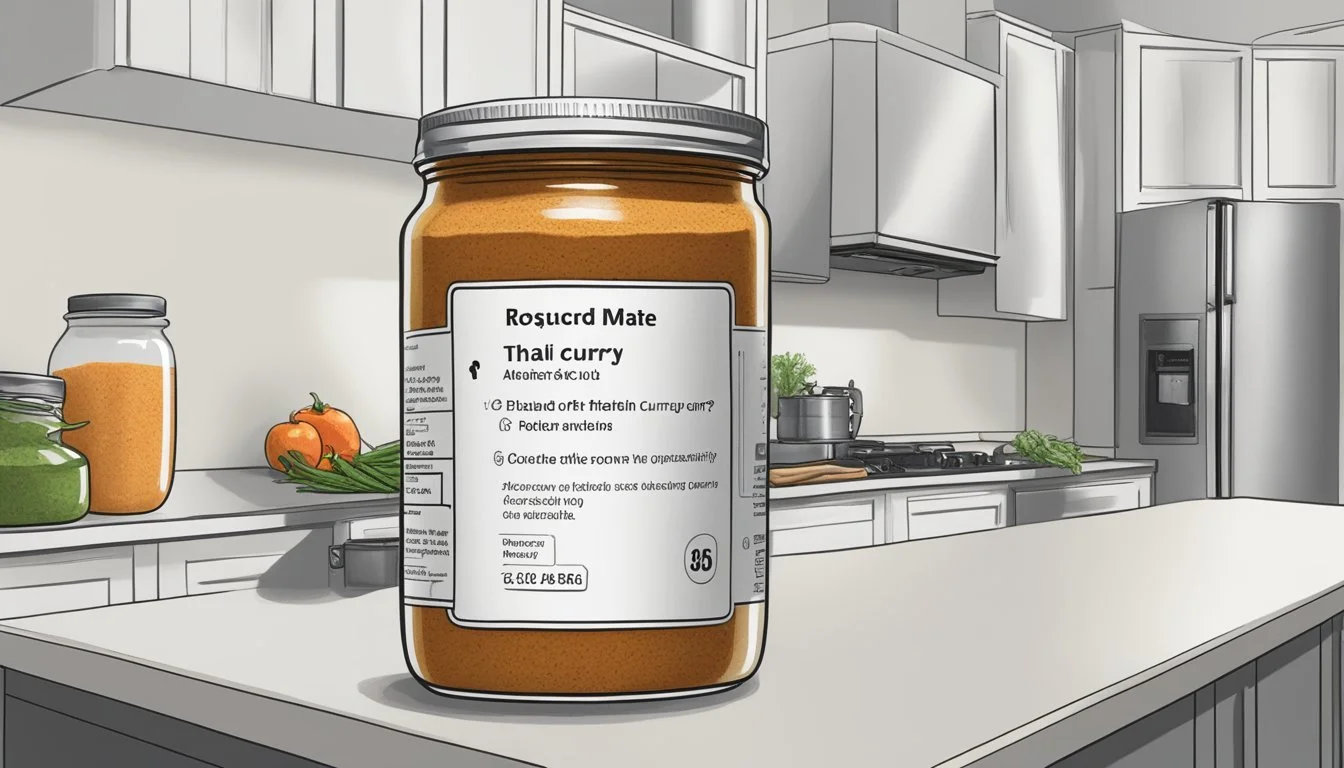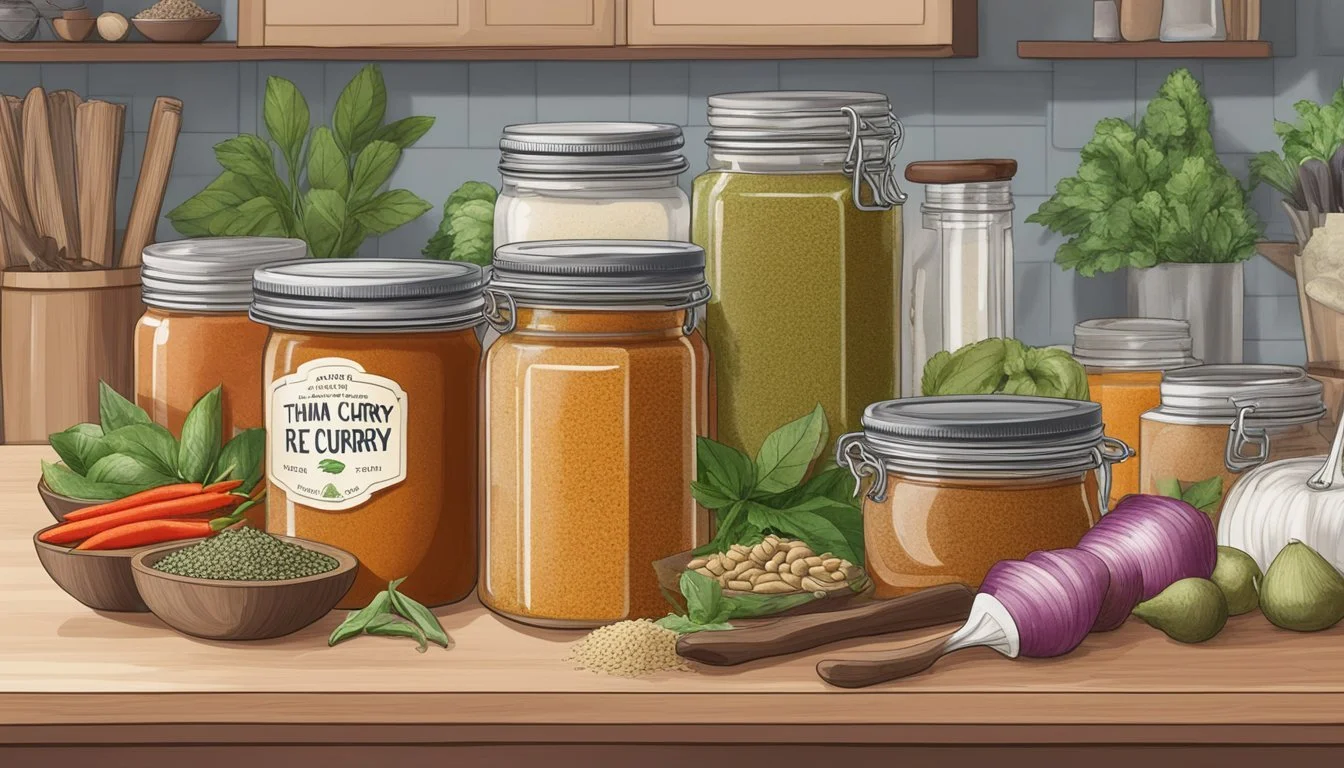Does Red Thai Curry Paste Go Bad?
Storage Tips and Shelf Life
Red Thai curry paste is a flavorful staple in many kitchens, bringing a burst of Thai cuisine to various dishes. Made from ingredients like red chili peppers, garlic, lemongrass, and galangal, this paste contributes a rich, spicy kick to curries, soups, and marinades. Yes, red Thai curry paste does go bad, especially after it has been opened and exposed to air and moisture.
When stored properly in an airtight container in the refrigerator, the paste maintains its peak flavor and quality for about three to four weeks. Over time, the flavors may degrade, reducing the potency and taste that make Thai curry dishes so distinctive. When unopened, the shelf life of the paste extends to several years, provided it is kept in a cool, dry place without exposure to direct sunlight.
Signs of spoilage in red Thai curry paste include changes in color, an off-putting odor, or visible mold. Using a paste that exhibits these signs can risk altering the taste of your dishes and may pose health concerns. Ensuring proper storage practices keeps your red Thai curry paste fresh and flavorful, preserving the authentic taste of your culinary creations.
Understanding Thai Curry Pastes
Thai curry pastes form the backbone of many traditional Thai dishes, offering unique flavors that define each type of curry. This section details the different types of Thai curry pastes, the composition of red curry paste, and the role of spices in red curry paste.
Types of Thai Curry Paste
Thai curry pastes come in several varieties, each serving a specific culinary purpose. Red curry paste is known for its bold, rich flavors and is made primarily from red chilies. Green curry paste, on the other hand, takes its color and fresh flavor from green chilies and herbs such as cilantro and kaffir lime. Yellow curry paste incorporates turmeric and cumin, resulting in a distinctive yellow hue and earthy taste. Each paste integrates a mix of other ingredients like garlic, lemongrass, and shrimp paste, making them versatile for various dishes.
Red Curry Paste Ingredients
The distinct flavor of red curry paste arises from its specific ingredients. Key components include red chilies, garlic, lemongrass, galangal, and coriander seeds. Shrimp paste adds a depth of umami, while kaffir lime zest provides a citrusy note. The paste may also include other seasonings like cumin and coriander roots.
When combined, these ingredients create a complex and aromatic paste that forms the basis of many Thai dishes. The freshness and quality of these ingredients significantly influence the final taste.
The Significance of Spices in Red Curry Paste
Spices play a crucial role in defining the flavor profile of red curry paste. Cumin and coriander seeds contribute subtle, earthy notes. Chilies provide the necessary heat, while kaffir lime and lemongrass add bright, aromatic elements. Galangal offers a slightly peppery and pine-like flavor, distinct from ginger.
Turmeric is sometimes included, especially in regional variations, for its color and subtle spice. The precise balance and freshness of these spices are vital for achieving the authentic taste that characterizes red curry paste.
Storage and Shelf Life of Red Thai Curry Paste
Proper storage of red Thai curry paste is essential for maintaining its flavor and prolonging its freshness. Both unopened and opened jars have different storage needs, so it's important to understand these to ensure the best quality.
Optimal Conditions for Longevity
Unopened red Thai curry paste should be stored in a cool, dark place, such as a pantry. When unopened, it can last for 3 or more years past its expiration date.
Opened jars should be tightly sealed with an airtight lid and kept in the fridge. The paste stays fresh for 2 to 4 weeks. Using glass jars helps prevent air and moisture from affecting the paste's quality.
Humidity can shorten the shelf life, so a refrigerator is preferable for opened jars to minimize exposure to moisture and maintain freshness.
The Impact of Storage on Flavor and Freshness
The flavor of red Thai curry paste is best during the first two weeks after opening.
After this period, the flavors start to deteriorate, becoming less vibrant and aromatic. Storing the paste in the fridge helps maintain its integrity by slowing down the degradation process.
Even after a few months, the paste is generally safe to use, though its taste might not be as strong. Review expiration dates and storage conditions regularly, ensuring that the lid is always tightly sealed to prevent any air from spoiling the paste.
For maximum quality, avoid storing opened jars near heat sources, as this can accelerate spoilage.
Health and Safety Considerations
When dealing with red Thai curry paste, it's important to ensure it hasn't spoiled and remains safe to use. Identifying signs of spoilage and taking preventive measures against contamination are key.
Identifying Spoiled Curry Paste
To determine if red Thai curry paste has gone bad, look for signs such as mold growth, a funky smell, or an off taste. If the color has faded significantly or the texture seems unusually watery or clumpy, it might be spoiled.
Another indicator is the presence of gas or a bulging container, which can signal bacterial activity. Consuming expired curry paste that shows these signs can lead to food poisoning.
Preventive Measures Against Contamination
Proper storage is crucial to prolonging the life of red Thai curry paste. Refrigerate the paste immediately after opening to slow down bacterial growth. Using an airtight container can help prevent contaminants from entering.
Additionally, always use clean utensils to scoop the paste and avoid double-dipping. Track the expiration date and store the paste at the right temperature to maintain its quality. Regularly check for any signs of spoilage to ensure safety.
Culinary Usage
Red Thai curry paste is a versatile ingredient utilized in various Thai dishes to impart rich flavor and heat. Its combination with other ingredients like coconut milk, fish sauce, and a variety of meats and vegetables creates complex and savory meals.
Red Curry Paste in Traditional Thai Dishes
Red Thai curry paste is a key component in Gaeng Daeng (Red Curry). This popular dish combines the paste with coconut milk, fish sauce, and a mix of meats like chicken or beef along with vegetables such as bell peppers and bamboo shoots.
Thai Red Curry Paste also plays a crucial role in Tom Kha Gai, a delicious coconut milk-based soup. While traditionally prepared with chicken, variations might include shrimp or tofu. The paste provides a punch of heat and flavor when paired with lemongrass and galangal.
In stir-fried dishes, the paste can be mixed with oil to coat meat and vegetables evenly. This method is seen in dishes like Pad Prik Khing, where green beans and pork or shrimp are sautéed to perfection.
Red Curry Paste Varieties
Red Thai curry paste varies in its preparation and ingredients, often based on regional preferences and the choice between commercial and artisanal options. Each type offers unique flavors and textures, catering to different culinary needs.
Regional Differences
Red curry paste differs across Thailand's regions. In central Thailand, it often includes cilantro roots and cumin. Northern versions might favor the use of local chiles for a spicier blend.
Southern Thai curry pastes are typically richer with the inclusion of shrimp paste and coconut milk. Key ingredients like lemongrass, galangal, and makrut lime zest remain constant, but their proportions can vary.
Commercial Brands and Artisanal Options
Commercial brands such as Thai Kitchen offer convenience and consistency. They are widely available in supermarkets and have a standard flavor profile. These pastes often come in jars or packets, making them easy to store and use.
Artisanal options, made fresh by local markets or specialized vendors, provide a more customized taste. These pastes may use fresher ingredients and traditional pounding methods. Some renowned brands and local vendors might include Mae Ploy and Maesri.
Both options have their own merits, and the choice depends on availability and preference.
Home Preparation and Preservation
Creating red Thai curry paste at home allows for customization and freshness, while proper storage techniques ensure its longevity and flavor retention.
Making Red Thai Curry Paste at Home
Making red Thai curry paste at home involves blending a variety of aromatics, spices, and ingredients to achieve the deep, rich flavors characteristic of Thai cuisine. Common ingredients include dried chili, coriander seeds, garlic, ginger, lemongrass, and shrimp paste. The traditional method uses a mortar and pestle, which helps release the oils and flavors from the spices and herbs. However, an immersion blender or food processor can also be used for convenience.
Recipe Example:
10 dried red chilies, soaked
2 tablespoons coriander seeds
2 tablespoons garlic, chopped
1 tablespoon ginger, grated
2 stalks lemongrass, chopped
1 tablespoon shrimp paste
Salt and oil as needed
Start by toasting the coriander seeds in a dry pan until fragrant. Combine all ingredients and blend into a smooth paste, adding oil as necessary to achieve the desired consistency. The paste is now ready to be incorporated into various dishes like soups, stir-fries, and marinades.
Storing Homemade Curry Paste
To preserve homemade red Thai curry paste, store it in an airtight glass jar to protect it from moisture and air, which can cause spoilage. The jar should be kept in the refrigerator, where the paste can remain fresh for 3 to 4 weeks. If a longer preservation period is desired, freezing the paste is advisable. Dividing the paste into smaller portions before freezing makes it easier to use only what is needed without defrosting the entire batch.
Freezing the paste in ice cube trays is a practical method, allowing for quick and easy usage in future recipes. Once frozen, transfer the cubes to a zip-lock bag for more efficient storage. Properly stored in the freezer, the curry paste can last for up to 3 months while retaining its flavor and potency.







